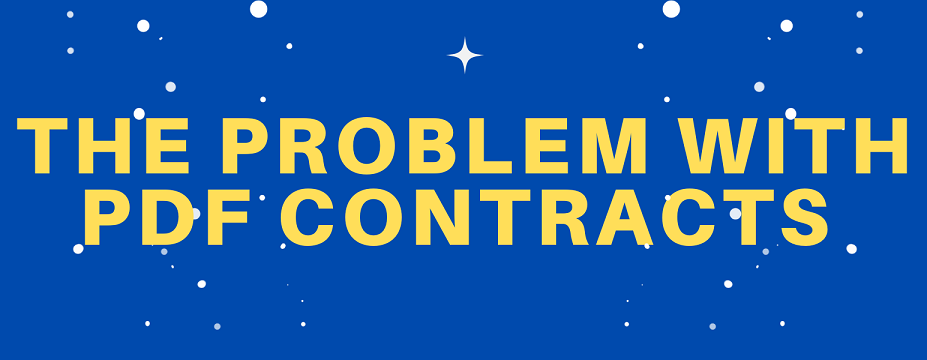PDF contract
It is possible to change the document content and date/time stamp of a PDF document. Along with the hashgraph algorithm, the PDF specification comprises the concept of an ID-tuple
It’s a fact that no business can survive without getting into contracts with other entities. Hundreds of thousands of contracts are signed daily across the globe. If not all, a majority of contracts currently in the world are signed and executed using free contract templates.
Entities enter into contracts with the intention of legal commitment to fulfill their offers and considerations. But, the contents of the agreement can be changed during the process of creation of the document and also after it has been executed by the parties, without the involved parties even coming to know about the change.
Also Read: What is CLM
Original Intention:
PDFs were originally designed to share richly formatted documents with enterprises or individuals. PDF became an international standard in 2008 as a bunch of companies led by Adobe added security features to PDF files. The foundation of a PDF is the hash-graph algorithm. Initially, security features added to the PDF were mainly the:
- Password Protection
- Electronic Signatures
- Encryption
Later, Digital Signatures were added to create an additional layer of security and verify who created and encrypted it.
Depending on the hashgraph algorithm used in the PDF files, it is not very difficult to tamper with a PDF document’s protection. It is possible to change the document content and date/time stamp of a PDF document. Along with the hashgraph algorithm, the PDF specification comprises the concept of an ID-tuple which includes timestamps for when the file was created and updated.
Also Read: Signature guarantee vs notary
The Problem:
Although PDF promise to offer safe and secure document protection, the problem is that the protection only applies to the entire document, not to the various parts of the document. This happens because the ID-tuple can be tempered with and while executing the document, it is very difficult to check when the document was modified and by who.
As an example, if a document has to be edited and signed by multiple parties, it has to be done by the parties one by one. While signing the document, if a party adds addendums to contracts or changes a section the document and signs it, there is no surety of who modified the document, at what times, and in which order. The PDF specification does not enable a document to be signed in parallel by multiple parties and then combined together.
Thus, while the world keeps creating, executing and using important agreements and contracts in PDF format, it is not very difficult to temper the documents. Such changes made knowingly or unknowingly to the document can lead to major issues while implementing the contract clauses or provisions. At the minimum, it can waste additional time and effort of the involved parties to re-negotiate and re-write the contract to the worst of businesses having to pay penalties and fines or even getting into litigation.
Also Read: Contract administration vs contract management
The best way to avoid such situations is to create contracts using platforms such as Legitt to create contracts as smart contracts to ensure the document created is temper-proof and does not cause issues for the involved parties.
Did you find this article worthwhile? More engaging blogs about smart contracts on the blockchain, contract management software and electronic signatures can be found in the Legitt Blogs section. You may also contact Legitt to hire the best contract lifecycle management services and solutions along with free contract templates.
